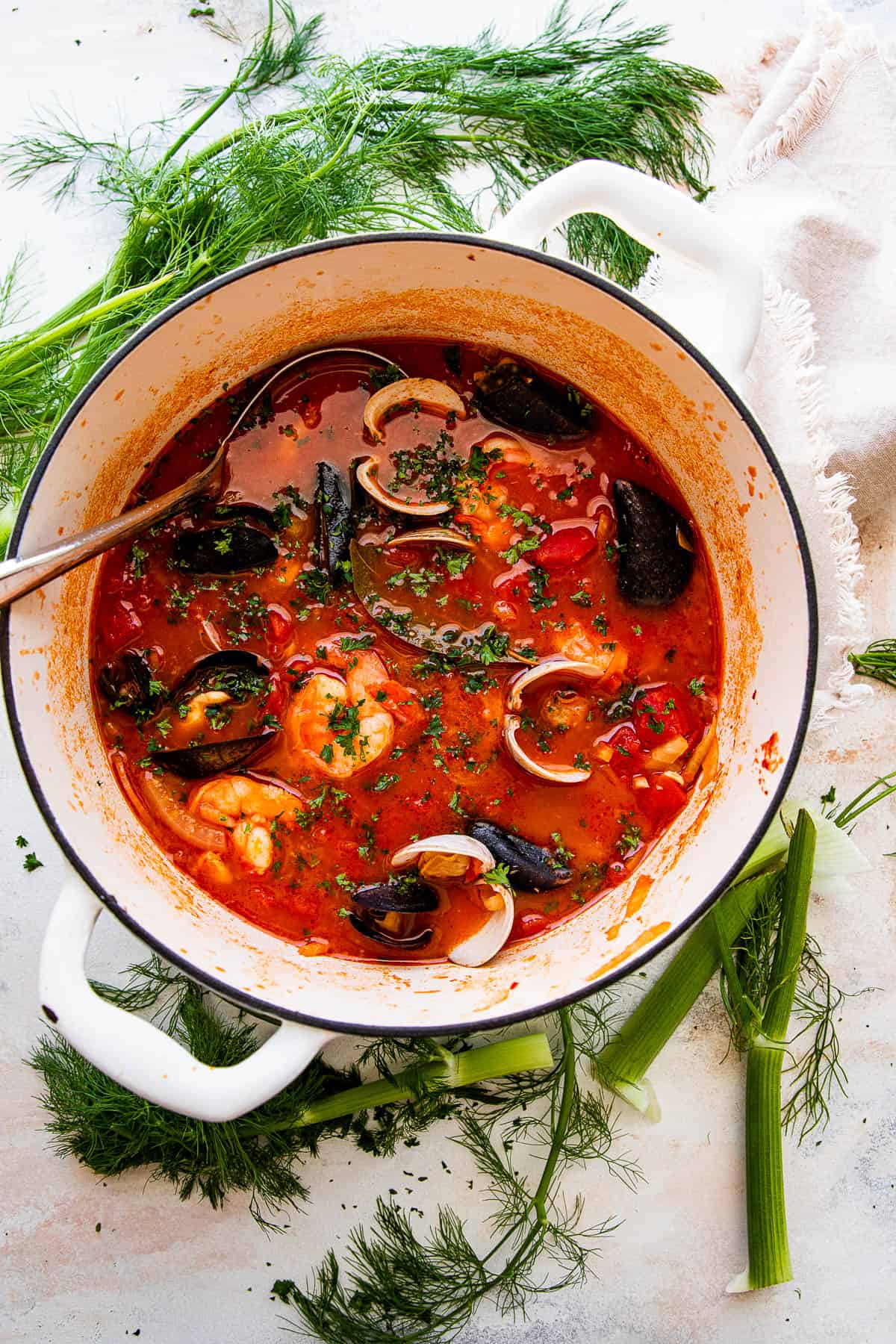Seafood enthusiasts around the globe love a dish that combines the best of the sea in a single bowl. Cioppino is that dish. The richly flavored and richly historic seafood stew has become a culinary emblem of San Francisco. With its Italian-American heritage and aromatic tomato-flavored broth, cioppino is an unforgettable seafood dish for any seafood lover.

In this article, we’ll explore everything about cioppino — from its fascinating history and key ingredients to a step-by-step guide to preparing the perfect bowl at home.
What is Cioppino?
Cioppino is a classic Italian-American seafood stew that originated in San Francisco in the late 1800s. Made with a variety of seafood like shrimp, mussels, clams, crab, and fish, this dish is cooked in a savory tomato and wine broth.
It’s typically served with toasted sourdough bread, ideal for sopping up the rich broth.
History of Cioppino
Cioppino’s history starts with Italian fishermen from Genoa, Italy, who immigrated to San Francisco. Cioppino is named after the Genoese word ciuppin, which means “to chop” or “chopped stew.”
These fishermen would mix together leftover seafood from the day’s catch with tomatoes, wine, garlic, and herbs — making a communal dish that warmed their spirits after days at sea.
Now, cioppino is Fisherman’s Wharf’s signature dish and San Francisco’s symbol of diverse culinary heritage.
Key Ingredients
Cioppino is also adaptable, and the cook can use a combination of seafood that they prefer. The most important thing is freshness. Below are the typical ingredients employed to make traditional cioppino:
Seafood:
Dungeness Crab
Shrimp
Clams
Mussels
Scallops
White Fish (halibut, cod, or sea bass)
Broth Base:
Olive Oil
Onion
Garlic
Celery
Fennel (optional)
Crushed Tomatoes
Tomato Paste
Dry White Wine
Seafood Stock or Fish Broth
Fresh Basil and Parsley
Salt, Pepper, and Red Chili Flakes (for heat)
How to Make Traditional Cioppino
Step 1: Prepare the Broth
In a big pot, heat olive oil and sauté onions, garlic, celery, and fennel until they are soft and fragrant. Add tomato paste and crushed tomatoes. Pour in white wine and seafood stock. Allow the mixture to simmer for 20-30 minutes to allow the flavors to develop.
Step 2: Cook the Seafood
Begin with mussels and clams as they are the slowest to cook. Cover the pot and cook until opened. Then, add crab, shrimp, scallops, and fish. Gently simmer until the seafood is just cooked.
Step 3: Final Touches
Sprinkle with salt, pepper, red chili flakes, and chopped fresh herbs such as basil and parsley. Serve the cioppino hot from large bowls and accompanied by crusty sourdough bread.
Why Cioppino is So Popular
Cioppino’s popularity isn’t solely due to its flavor — it’s also an experience.
It’s a warm, comforting meal ideal for sharing with family and friends.
It provides multiple textures and tastes from various kinds of seafood.
It’s versatile — you can add or omit seafood depending on what’s available.
Health Benefits of Cioppino
Cioppino is a healthy dish full of health benefits:
High in lean protein from seafood
Omega-3 fatty acids support heart health
Tomatoes contain antioxidants such as lycopene
Low-carb when served without bread
Packed with essential minerals such as iodine, zinc, and iron
Serving Suggestions
Cioppino goes well with:
Toasted sourdough bread
Garlic bread
A crisp white wine such as Sauvignon Blanc or Chardonnay
Fresh green salad for a simple side dish
Contemporary Versions of Cioppino
While classic cioppino is tomato-based, modern chefs have developed a number of innovative variations:
Spicy Cioppino
Add additional chili flakes or a dash of hot sauce for a spicy kick.
Creamy Cioppino
Add a pinch of cream or butter for a more decadent broth.
Cioppino Pasta
Serve the seafood stew over linguine or spaghetti for a satisfying meal.
Mediterranean Cioppino
Add olives, capers, and fresh lemon juice for a tangy Mediterranean twist.
Final Thoughts
Cioppino is more than a seafood stew — it’s a dish rich in history, culture, and the essence of coming together. Whether served at a San Francisco waterfront restaurant or cooked at home for a family dinner, cioppino provides a dining experience that honors the ocean’s finest flavors.
If you’re a seafood lover or someone looking to try a dish with both heart and heritage, cioppino should be next on your recipe list.

Leave a Reply